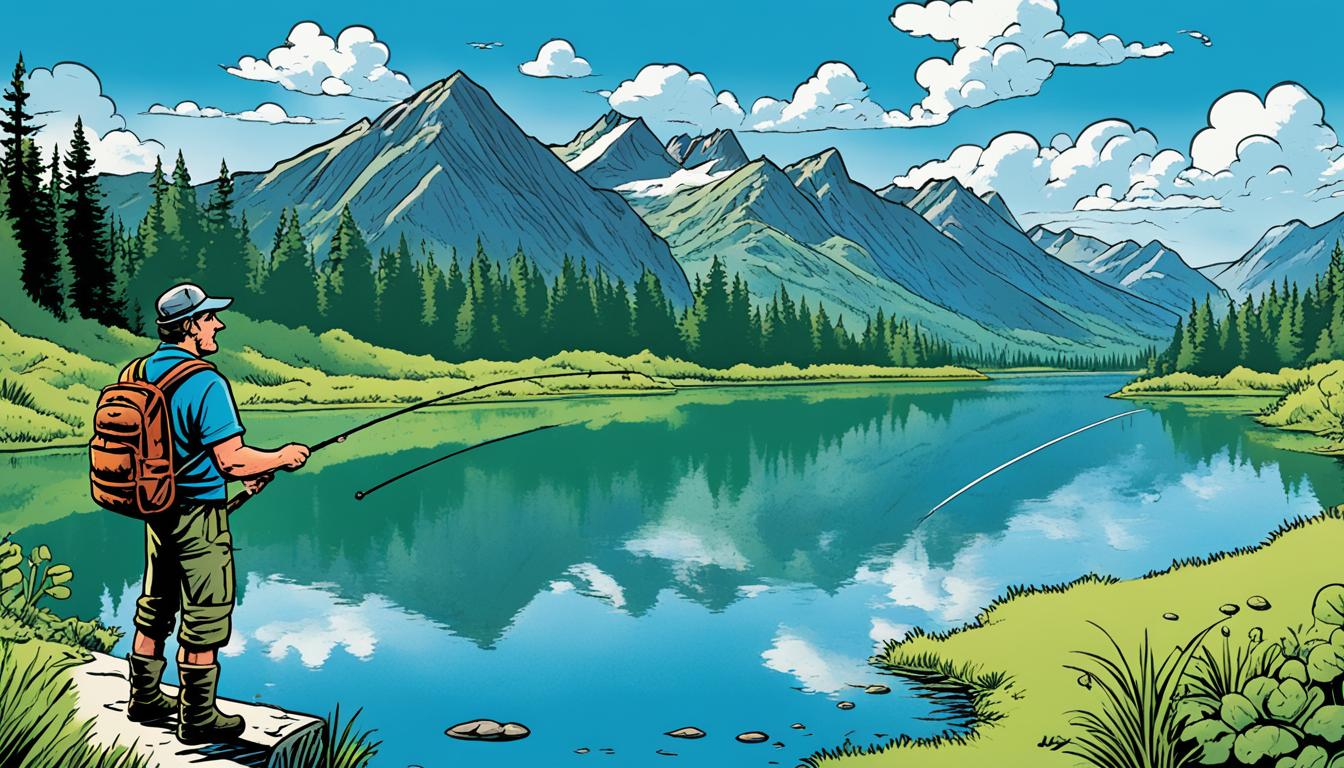
California bluegill angling with worms
On May 21, 2024 by fishingamericatodayWelcome to the exciting world of California bluegill angling! Target bluegill in California’s beautiful waters for a fun fishing experience. Bluegill, or Bream, are easy to catch with different techniques and baits. This article covers the best spots, tips for success, and using worms as bait.
Bluegill are curious and colorful fish with a fighting spirit. They’re fun to catch, even though they aren’t very big. Catching one over 3lbs is a rare achievement. California, especially places like Barrett Lake, is great for catching bluegill.
California is full of great spots for bluegill fishing. Lakes, rivers, and reservoirs offer many chances to catch bluegill. Northern California has places like Folsom Lake. Southern California is home to spots like Diamond Valley Lake. Even smaller ponds and reservoirs offer good fishing.
Let’s jump into some tips for catching bluegill in California. Use light fishing gear, like a 2lb test line, to catch bluegill. A small spinning rod and reel gives you the best control. This makes fishing fun and effective.
Worms are a great bait for bluegill in California. Bluegill love to eat them. Use small hooks and light rigs for a natural worm presentation. Vary your bait’s speed and depth to catch more bluegill. With the right approach, you’ll catch a lot.
Get ready, pack your gear and worms, and go fish at California’s bluegill hotspots. You’re about to make unforgettable memories. Happy fishing!
Best Bluegill Fishing Spots in California
California has many lakes and rivers perfect for bluegill fishing. If you love to fish or are just starting, there are great places to enjoy. Here are some top bluegill spots in California:
1. Barrett Lake
Just by San Diego, Barrett Lake is famous for large bluegill. Its clear waters and many underwater structures make it ideal for fishing. You can use live bait or lures here to catch bluegill.
2. Clear Lake
In Northern California, Clear Lake is known for its big bluegill. It has tons of weed beds and shallow coves. This makes it a top place for those fishing for bluegill.
3. Lake Berryessa
Lake Berryessa, in Napa County, is beautiful and full of bluegill. It has plenty of rocks, trees, and plants for them to thrive. Fishing here, both from shore and boat, is peaceful and rewarding.
4. Folsom Lake
Folsom Lake, also in Northern California, is a favorite for bluegill fishing. It has lots of chances to catch bluegill. Whether fishing from the shore or in a boat, Folsom Lake is a fun spot.
5. Diamond Valley Lake
In Southern California, try Diamond Valley Lake for bluegill. It’s a big reservoir with lots of hiding spots for bluegill. The stunning views and plenty of fish make this a favorite.
6. Lake Elsinore
Lake Elsinore, in Riverside County, is great for bluegill. It’s shallow and full of nutrients, perfect for bluegill. There are many great places to fish here from a boat or the shore.
7. Lake Camanche
In the Sierra Nevada foothills, there’s Lake Camanche for bluegill. This lake has rocky shores and shallow bays, which bluegill love. It’s a great fishing spot for all levels.
8. Other Reservoirs and Ponds
California is full of small reservoirs and ponds perfect for bluegill. These hidden spots are great for peaceful and fruitful fishing away from the crowds..
| Lake | Location | Notable Features |
|---|---|---|
| Barrett Lake | San Diego | Large bluegill catches, crystal-clear waters |
| Clear Lake | Northern California | Trophy-sized bluegill, extensive weed beds |
| Lake Berryessa | Napa County | Picturesque scenery, healthy bluegill population |
| Folsom Lake | Northern California | Diverse fishing opportunities, abundant bluegill |
| Diamond Valley Lake | Southern California | Abundant bluegill, stunning views |
| Lake Elsinore | Riverside County | Shallow lake, prime bluegill habitat |
| Lake Camanche | Sierra Nevada foothills | Rocky shores, shallow bays |
| Other Reservoirs and Ponds | Variety of locations | Secluded fishing spots, uncrowded waters |
California Bluegill Angling Tips and Techniques
Catching bluegill in California requires the right gear. You can use 2lb line successfully, but 4lb or 6lb might be better around heavy cover. I suggest an ultra-light spinning rod with a small reel. This duo is perfect for feeling those light bites and catching bluegill.
Let’s discuss the bait now. For bluegill, worms are a top choice. Thread a bit of worm on a size 8 or 10 hook. Then, cast near places where bluegill hang out, like around vegetation or fallen logs.
Onto how you present your bait. Keep it natural. Cast softly and let the worm sink on its own. Don’t make sudden movements that could scare the fish. Bluegill are curious and often check out slow-moving baits. Angling for bluegill requires patience. Sometimes, they’re picky. Try different strategies and stay flexible.
FAQ
How can I catch bluegill in California using worms as bait?
To catch bluegill in California with worms, use a small-sized hook, like size 6 or 8. Then, thread a worm, live or fake, onto the hook.
Cast your line in shallow waters. This could be near a structure or plants where bluegill like to hide. Let the worm sink a little. Then, reel in slowly to attract the bluegill.
What are the best bluegill fishing spots in California?
California is full of lakes and rivers perfect for bluegill fishing. For big bluegill, try Barrett Lake near San Diego.
Clear Lake is famous for its large bluegill. Lake Berryessa also has a lot of bluegill. In Northern California, check out Folsom Lake or Lake Camanche.
In Southern California, Diamond Valley Lake and Lake Elsinore are great. You can even find good fishing in smaller reservoirs and ponds across the state.
What are some tips and techniques for bluegill angling in California?
Lightweight gear is key for bluegill in California. Go for a 2lb test line. If there’s a lot of stuff in the water, you might need a 4lb or 6lb line.
Use an ultra-light spinning rod with a small reel. It’s easy to handle and works well. Adding a bobber to your setup can help keep your bait at the right depth.
Try different bait, like worms, crickets, or small jigs, to see what the bluegill like. This way, you can figure out what works best in your fishing spot.
Source Links
- https://www.howtocatchanyfish.com/bluegill.html
- https://www.ifish.net/threads/worms-in-bluegill-meat.315917/
- https://www.in-fisherman.com/editorial/tail-hook-rigs-for-panfish-that-nibble/156232
